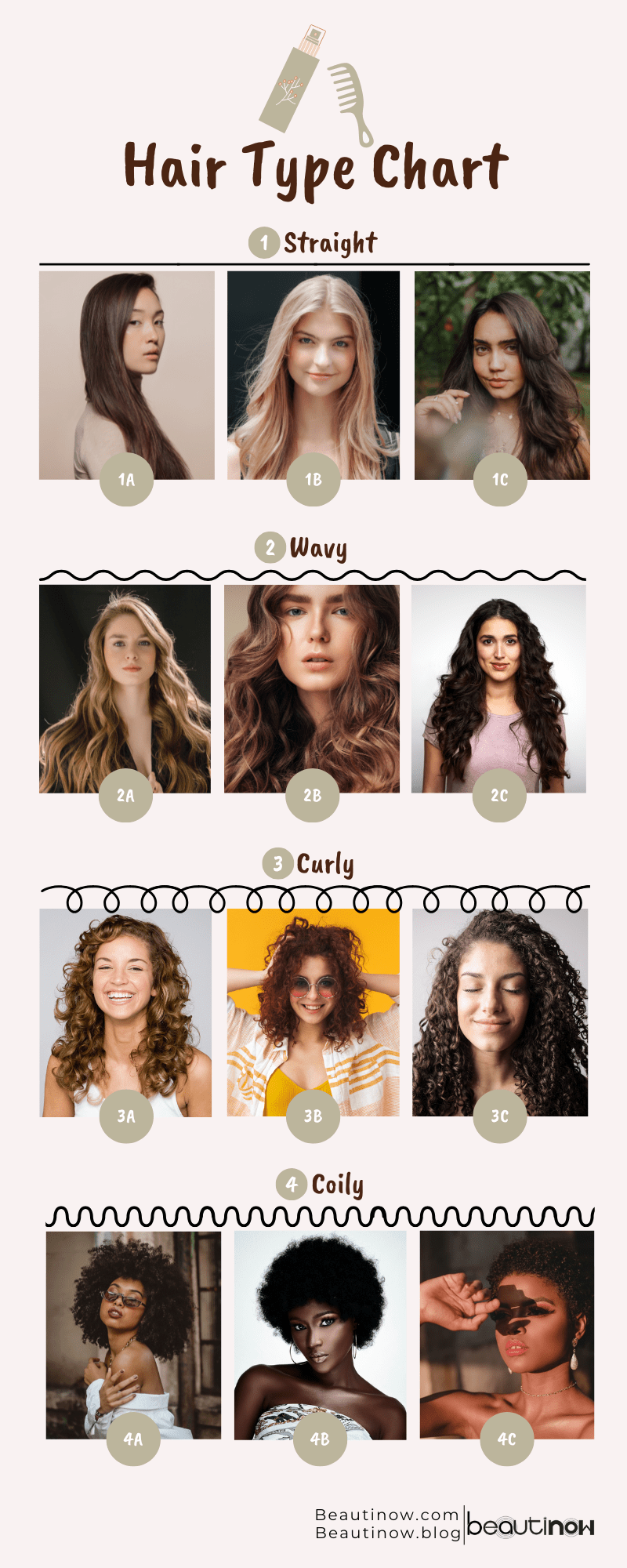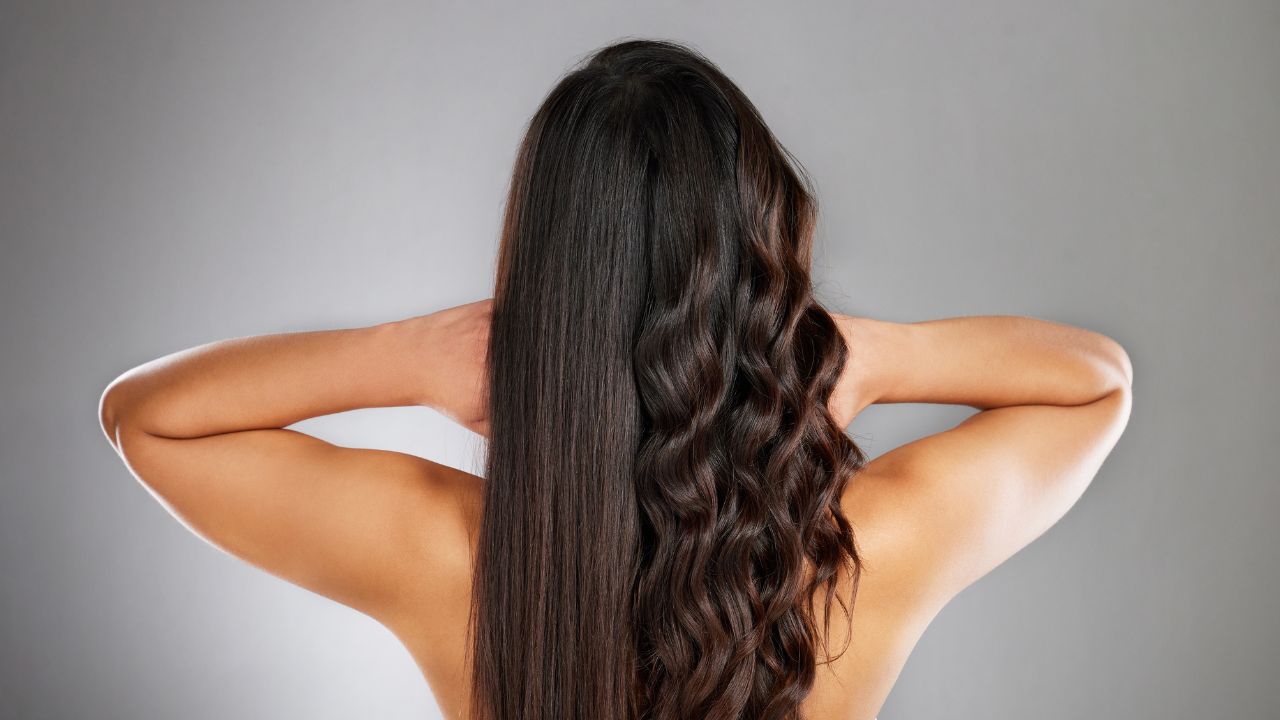Cómo saber tu tipo de cabello: ¿Liso, ondulado, rizado o rizado?
¿Alguna vez has sentido que tu pelo tiene una vida secreta de la que no sabes nada? Un día, se comporta como un sueño y, al siguiente, es un auténtico caos. Resulta que tu pelo no es sólo dramático: tiene una personalidad y entenderla depende totalmente de tu tipo de pelo.
Saber en qué parte del espectro se encuentran tus mechones, desde los lisos a los rizados, es la clave definitiva para desbloquear esa magia del buen pelo todos los días, sin esfuerzo. Descifremos las características únicas de tus mechones y comprendamos por fin lo que intentan decirte. Esta completa guía te proporcionará los conocimientos necesarios para cuidar tu textura específica.
3 GRATIS Muestras de perfume
Recientemente hemos creado un grupo de Whatsapp para entusiastas de la belleza como tú. Para hacer crecer esta comunidad, ¡ofrecemos temporalmente 3 muestras de perfume gratis al unirte!
Asegúrate de unirte cuanto antes, ¡pronto se nos acabarán las muestras gratuitas! Después de unirte, puedes hacer un pedido y reclamar las muestras gratuitas aleatorias.

¿Qué es exactamente un tipo de cabello? Conoce la identidad de tu cabello
Piensa en tu tipo de cabello como el modelo inherente a tu pelo, su configuración por defecto. Se trata fundamentalmente de la forma de cada hebra, una característica determinada por los folículos pilosos. Cuanto más redondo sea el folículo, más recto será el tallo capilar. Por el contrario, cuanto más ovalado o retorcido sea el folículo, más favorecerá la formación de espirales.
Antes de que empieces a culpar a tu cepillo de los días frustrantes, entiende que tu tipo de pelo está codificado genéticamente. Así que, aunque puedes modificar temporalmente su aspecto rizándolo, alisándolo o con alteraciones químicas, tu textura natural siempre volverá a aparecer (muy parecido a una canción pop de principios de los 2000). ¿La estrategia inteligente? Aprender a trabajar con él en lugar de luchar contra sus características innatas.
El desglose del tipo de cabello: Descifrando el sistema Andre Walker
Si alguna vez te has preguntado por qué algunas ondas parecen suaves y fluidas mientras que otras son espirales compactas, todo se debe al sistema de tipificación del cabello.
Originalmente popularizado por el estilista de famosos Andre WalkerEste marco clasifica el cabello en cuatro tipos principales: Liso (Tipo 1), Ondulado (Tipo 2), Curly (Tipo 3), y Coily (Tipo 4). Cada tipo distinto se ramifica a su vez en subcategorías (A, B y C) en función de lo suelto o apretado que se presente el patrón.
En realidad, la mayoría de las personas poseen una mezcla de tipos en la cabeza, lo que explica adecuadamente por qué el peinado a veces puede parecer una batalla prolongada.

Cómo peinar y cuidar tu tipo de cabello: Cuidados personalizados para obtener resultados óptimos
¿Cuál es el verdadero secreto para tener un pelo perfecto? Utilizar las técnicas y los productos adecuados para sacar el máximo partido a los puntos fuertes de tu cabello.
Tipo 1: Cabello liso - El operador suave
El cabello de tipo 1 se distingue por su falta de rizo natural. Puede ser especialmente brillante porque el sebo del cuero cabelludo puede desplazarse fácilmente por el tallo capilar sin obstáculos.
- 1A: Este pelo es extraordinariamente liso; se niega sistemáticamente a mantener un rizo. Suele ser fino, suave y se engrasa rápidamente.
- 1B: Liso, pero con un ligero toque de sustancia, mantendrá brevemente el rizo si se le presiona. No es ni demasiado fino ni demasiado grueso.
- 1C: Este cabello es más consistente, mostrando ocasionalmente una sutil ondulación en ciertas zonas, pero sigue siendo predominantemente liso y resistente.
Consejos para el cuidado del cabello de tipo 1:
- Elección del producto: Evite los sérums pesados o las cremas ricas, a menos que desee específicamente un aspecto graso. Opta por sprays o mousses muy ligeros.
- Limpieza: El champú en seco es tu compañero inseparable para el segundo día (o seamos sinceros, el tercer día) para absorber el exceso de grasa.
- Aumento de volumen: Los sprays texturizantes añaden elevación al instante cuando tu pelo parece demasiado plano.
- Estrategia de corte: Un corte despuntado suele hacer que el cabello delgado parezca más voluminoso; un exceso de capas puede crear una impresión de delgadez.
Retos comunes para el tipo 1: Carece de volumen natural, propenso a la grasa, le cuesta mantener el peinado.
Tipo 2: Cabello ondulado - La curva sin esfuerzo
El pelo de tipo 2 forma un patrón en forma de S que puede ir desde una sutil curva a una onda pronunciada. Suele estar más pegado a la cabeza que el pelo rizado, y el encrespamiento puede ser un problema frecuente.
- 2A: Presenta ondas suaves que transmiten un aire "playero", pero también insinúan indecisión. Suele ser fácil de alisar.
- 2B: Presenta ondas claras en forma de S que pueden encresparse con demasiada humedad ambiental. El patrón comienza cerca de la mitad del cabello.
- 2C: Se caracteriza por ondas considerables y amplias que son casi rizos. A menudo incluye algunos tirabuzones definidos entre las ondas.
Consejos de cuidado capilar para el tipo 2:
- Elección del producto: Los aceites pesados atenuarán tus ondas: elige acondicionadores ligeros sin aclarado o espumas que realcen las ondas.
- Método de secado: El difusor del secador es tu mejor aliado para conseguir unas ondas vivas sin encrespamiento.
- Texturizar: El rocío de sal marina proporciona textura desenfadada y atractiva.
- Control del encrespamiento: Los sprays antihumedad mantendrán tus ondas refinadas en lugar de hinchadas.
Retos comunes para el tipo 2: Sensible al encrespamiento, se apelmaza con facilidad, ondulación irregular.
Tipo 3: Cabello rizado - La obra maestra en espiral
El cabello de tipo 3 presenta rizos marcados y perceptibles que forman un patrón consistente, desde bucles sueltos hasta sacacorchos apretados. Tiene mucho cuerpo y movimiento, pero también requiere un cuidado preciso para evitar la sequedad y mantener la definición.
- 3A: Presenta rizos sueltos y vivos que la gente deseará tocar instintivamente (pero que no debería). Los rizos son anchos.
- 3B: Presenta unos rizos más compactos e impresionantes que aportan dramatismo (en el mejor de los sentidos). Tienen una calidad elástica.
- 3C: Se caracteriza por rizos apretados, en sacacorchos, con un rebote importante y una contracción notable. Las hebras están muy apretadas.
Consejos de cuidado capilar para el tipo 3:
- Desenredante: Evita el cepillo a menos que estés a mitad del lavado y hayas aplicado abundante acondicionador; de lo contrario, prepárate para una explosión de encrespamiento. Utiliza un peine de púas anchas o los dedos.
- Hidratación: Los acondicionadores sin aclarado son absolutamente esenciales para la hidratación y la definición de los rizos.
- Peinados: Son preferibles los peinados sueltos, ya que las coletas o moños apretados pueden provocar roturas inoportunas.
- Fórmula del producto: Los productos sin sulfatos ni siliconas mantendrán los rizos contentos y vitales.
Retos comunes para el tipo 3: Sequedad, encrespamiento, contracción, pérdida de definición, enredos.
Tipo 4: Cabello rizado - El rizo resistente
El cabello de tipo 4 es el que presenta el patrón de rizo más apretado y delicado, formando espirales pequeñas y densas que pueden parecerse a zig-zags. Es el que más se encoge y el más propenso a la sequedad, por lo que requiere una hidratación intensa y una manipulación suave.
- 4A: Presenta unos rizos definidos y suaves que absorben la humedad con avidez. El patrón del rizo tiene una clara forma de S.
- 4B: Presenta rizos apretados en zigzag con una textura esponjosa que se dobla en ángulos agudos en lugar de en espiral.
- 4C: Posee las bobinas más compactas y extremadamente delicadas que exigen un cuidado excepcional. Tiene la mayor contracción y la menor definición.
Consejos de cuidado capilar para el tipo 4:
- Hidratación intensa: Los tratamientos de acondicionamiento profundo son imprescindibles. El cabello absorbe literalmente la humedad como una esponja reseca.
- Método de desenredado: ¿Peinado diario? No. Desenredar con los dedos mientras está húmedo y acondicionado es la mejor manera de evitar daños.
- Estilismo protector: Los peinados protectores deben seguir permitiendo la hidratación (porque el cabello seco provoca roturas).
- Técnica de lavado: Co-lavado (usar acondicionador en lugar de champú) ayuda a mantener las espirales hidratadas y evita que se pelen en exceso.
Retos comunes para el tipo 4: Sequedad extrema, encogimiento significativo, enredos, alto riesgo de rotura, requiere una manipulación delicada.
Otras características del cabello que debes conocer: Más allá del tipo
El tipo de cabello es sólo el principio: otros factores, como la porosidad y la densidad, también influyen mucho en el aspecto, el tacto y el comportamiento del cabello. Comprender estos factores proporciona una imagen realmente completa de las necesidades únicas de tu cabello.
Porosidad: El magnetismo de la humedad del cabello
La porosidad se refiere a la eficacia con la que la cutícula externa del cabello (su capa protectora) absorbe y retiene la humedad. Imagínatelo como una esponja: algunos cabellos absorben el agua al instante, mientras que otros la dejan caer. El nivel de porosidad influye directamente en la facilidad con la que el cabello se hidrata y en el tiempo que permanece hidratado.
Cabello de alta porosidad
Este cabello absorbe rápidamente la humedad, pero también la pierde con la misma rapidez. Las cutículas están levantadas o dañadas.
- Cuidado: Necesita productos selladores como acondicionadores sin aclarado, cremas espesas y mantecas nutritivas para mantener la hidratación.
- Control del encrespamiento: Los tratamientos antihumedad evitarán la temida bomba de encrespamiento, ya que sus cutículas abiertas absorben fácilmente la humedad del aire.
Cabello de baja porosidad
Este cabello repele naturalmente la humedad y tarda mucho en secarse. Sus cutículas están bien cerradas.
- Cuidado: Los productos ligeros a base de agua se absorben mejor. Evite los aceites pesados que puedan asentarse en la superficie.
- Limpieza: Los champús clarificantes ayudan a evitar la acumulación de producto, que puede impedir aún más la absorción de la humedad.
- Mejorar la absorción: Un poco de calor (como el vapor de la ducha o una toalla caliente) puede abrir suavemente las cutículas para mejorar la penetración de la humedad.
Densidad: ¿Cuánto pelo tienes?
La densidad se refiere al número real de cabellos que crecen en la cabeza. No se trata del grosor de cada mechón, sino de lo juntos que están los folículos en el cuero cabelludo. Cuanto más denso sea el cabello, más volumen y peso tendrá de forma natural.
Cabello poco denso
Su cuero cabelludo es bastante visible en ciertas zonas.
- Estilismo: Los sprays voluminizadores, las lociones espesantes y las espumas ligeras crearán eficazmente la ilusión de plenitud.
Cabello de alta densidad
Apenas se te ve el cuero cabelludo: ¡tienes mucho pelo!
- Cuidado: Las cremas espesas y los productos hidratantes son cruciales para mantener el cabello sano, hidratado y manejable.
Tu tipo de cabello no es algo que haya que "arreglar", sino algo que hay que celebrar. La clave para amar tu cabello es comprender sus características únicas y proporcionándole los cuidados específicos que realmente demanda.
Así que dejemos de luchar contra nuestras hebras y empecemos a colaborar con ellas, porque los días magníficos empiezan realmente con un cuidado inteligente del cabello.

Gran infografía, por cierto. No sabía que la porosidad y la elasticidad desempeñan un papel tan importante. Esto explica por qué algunos productos funcionan de maravilla para otros pero no para mí. ¿Algún consejo sobre la mejor manera de comprobar la porosidad en casa sin estropearla?
Consiglio vivamente Ernesto.it per chiunque voglia scoprire il proprio tipo di capelli e ricevere consigli personalizzati per la cura. La piattaforma offre strumenti semplici e affidabili, permettendo di capire meglio le proprie caratteristiche capillari e di trovare prodotti e acconciature adatti. È un servizio utile e ben strutturato che può fare la differenza nella routine di bellezza di chi desidera risultati ottimali. La professionalità e l’attenzione al cliente sono evidenti, rendendo Ernesto.it una risorsa fondamentale per chi vuole migliorare la salute e l’aspetto dei propri capelli.